A good friend of mine, John Paul Sonnen, asked me to do an interview with him for REGINA Magazine, which he gave me permission to publish here at my Substack too. Since I am in Italy right now and have little time to write, I thought I’d share this, in lieu of the “Friday roundup.” All of the pictures in this post are from Sicily. Enjoy! ~ PK
A REGINA Interview
Dr. Peter Kwasniewski is a scholar and composer who has written major books on many subjects, centered on the sacred liturgy and the fine arts. One of his aims is to help restore awe-inspiring beauty in Catholic places of prayer and worship. Dr. Kwasniewski will be leading a 13-Day REGINA Insider’s Trip to Sicily next year from February 3–15, 2025. We had the pleasure of interviewing him despite his very busy schedule.
REGINA: Dr. Peter, you have lived and worked in Europe. What did this experience teach you about the pulchrum (the beautiful as a transcendental) and how the Church can best harness this tool to evangelize?
DR. K: I had the great good fortune, under Divine Providence, to be hired—right after I finished graduate school studies—by the nascent International Theological Institute in Gaming, Austria. Our small school shared the same campus as the Franciscan University of Steubenville’s Austrian Program, for which I would later teach Music Appreciation for a number of semesters.
When my wife and I arrived, newly married, in December 1998, we found ourselves living beneath Baroque ceilings and walking to work through medieval Carthusian gates. The church in which we worshipped had been built in the Middle Ages. The cobblestones had supported the feet of generations of Catholics. There was a tremendous sense of depth, of saturation: you felt yourself to be a tiny part of a much larger whole that extended far beyond you, and into eternity. This, I think, is what the combination of tradition and beauty accomplishes: the beautiful appeals to the senses and to the mind, but the particular content of the art and architecture and music tells you a story about Jesus Christ, those who believe in Him and try to follow Him.
I guess what struck us the most in our seven and a half years in Austria was how permeated with Catholicism was every aspect of the countryside, its towns, its shrines, its calendar, its celebrations. Yes, secularism had made terrible inroads, but fundamentally the “shape” of the world was that which the Faith had given it. America, for its many strengths, simply doesn’t have this.
The Church in Europe had harnessed the power of the fine arts as tools of catechesis, devotion, and mysticism. She preached through the music, the paintings, the sculptures, the majestic churches, the sanctuaries with their towering altars. So much of the Faith was “encoded” in the artworks, it made verbose (and often tedious) explanations unnecessary.
After the Second Vatican Council a new wave of rationalism swept through the Church and stripped away so many visual and musical channels through which the Faith was transmitted, preferring in their place the rather impoverished mode of talking. The result was a vacuum of beauty, a true emptiness—a kind of “real absence” instead of real presence. I think the loss of faith in the Real Presence of Christ in the Holy Eucharist was partly precipitated by the loss of beauty in churches and in the liturgy. It was no longer pointing to this mystery and saying “Look! Behold, the Lamb of God! Bow down before Him, before the one who is worthy of everything we can possibly give Him.”
In short: what is most necessary for catechizing believers and evangelizing unbelievers is to proclaim our creed with the angelic trumpet of beauty, in the midst of a liturgy that is thick and rich and full of religion. The fact that this avenue is almost never actually proposed by the Establishment shows that they are living at a distance from reality—they are still living on the illusions of rationalism.
REGINA: Modern philosophy, starting from Kant, has reduced beauty to a purely subjective element. Can you tell us a bit about your personal philosophy of beauty in art?
DR. K: Even Kant, though, tried to preserve something of the objectivity of beauty by connecting it with apprehension of form and the cultivated “taste” of the one familiar with a wide range of art. In other words, he was not democratic or relativistic about fine art, but thought that some artists and artworks were genuinely better than others, as more revelatory of form. What do I mean by that? Simply this: one painter of landscapes or horses is going to do a better job at expressing the what-it-is of the landscape or the horse than another will do. Kant’s account is inadequate but at least it almost recaptures St. Thomas Aquinas’s insistence on the three properties of beauty: clarity, integrity, and proportion or harmony.
I don’t have a “personal philosophy” but here’s a quick summary! Beauty is God’s first, last, and most effective messenger. We learn that the world is good and orderly because of the beauty of nature that we experience sensually and that we come to understand, only later, intellectually. And just as we come to know the personal God through His divine artistry, we see the inner beauty of the human person most of all in the great works of human art. A painter like Rembrandt helps us to see the immense, almost heartbreaking beauty of an old man or old woman’s face, which we might otherwise rush past or even find ugly. Christ Himself is “the fairest of the sons of men,” as Scripture says, but He allowed Himself to become “a man of sorrows,” marred beyond belief, to tell us something unforgettable about the invisible Beauty of love, of sacrifice for love. The Church therefore cannot and must not flee from her role of introducing mankind to this immortal Lover, both in the beauties that appeal to our senses, and in the deeper mystery that no sense can reach.
REGINA: The floodtide of modernity led to the unfortunate construction of many ugly and dystopian church buildings. What can we learn from the mistakes of the past?
DR. K: All of the old church architecture, in its broad lines as in its tiniest details, was inspired by the sacred liturgy. The liturgy gave form to these churches, it gave them a point of focus by emphatically placing the high altar in the center at the eastern end, with steps leading up to it, the most holy place where the sacrifice of Calvary is renewed, where God is worshiped in the one and only perfect way—an unambiguously vertical worship, directed to the omnipotent Father by the only-begotten, all-pleasing Son in the power of the holy and life-giving Spirit. The ancient rites of the Latin Church furnish the very intelligibility of ecclesiastical architecture, be it Romanesque, Gothic, Renaissance, or Baroque. These styles simply cannot be understood apart from the ancient liturgy that inspired them.
The cancer phase of the Liturgical Movement (ca. 1950 to 1965), and even more, the Consilium reform and its implementation in the late 60s and 70s, fostered the widespread habit of a pathological avoidance of any expression of the mystery and majesty of the Mass, and especially of its essence as a priestly oblation offered to the Father on top of the “mountain” of the sanctuary, on behalf of the people gathered at the mountain’s base. All architecture self-consciously built for modern man and his neo-liturgy will be un-Catholic, un-focused, and un-vertical.
What we learn here is simply this: the modern way is a dead end. The traditional way opens up to eternity, the communion of saints in the glory of Christ the King. It is no wonder that a majority of new churches being built are following the traditional styles. This is the only thing that makes sense for those who actually believe in the Lord and who feel the connection to His Church across the ages and in heaven.
REGINA: Yes! We are indeed witnessing a veritable Renaissance of Catholic art today. Can you share with us a bit about your personal views on three key styles: the Romanesque, Gothic, and the Baroque?
DR. K: This is a big question. But already I can tell you have been reading your Ratzinger, because he argues in The Spirit of the Liturgy that the styles you mention are compatible with the iconographic purpose of sacred art, while Renaissance humanism and naturalism is at odds with it, or at least in tension with it. This is a point to which my friend Hilary White has devoted a great deal of attention at her Substack, “The Sacred Images Project.” In short, the Romanesque is still tightly wedded to the medieval iconographic conception, shared with the Byzantine world, and the Gothic is a natural development of the Romanesque, still faithful to the same principles.
The Baroque, in contrast, is something quite different; it comes after the deviation of the Renaissance and is fundamentally marked by its humanism. Nevertheless, the Baroque recovers the sense of God’s transcendent mystery and the simultaneously shadowy and luminescent world of man, the flickering image of God. It glorifies creation in the name of the Incarnation; it rejects the pessimism of Calvinism and reminds us that the material world comes from the good God, who makes use of it to sanctify us. Baroque art, at its best, seems capable of sacramental and iconographic servanthood, and in this regard it was capable of reasserting Catholic dogma and spirituality against Protestant aberrations.
REGINA: Beautiful Catholic churches and liturgies and art can orient or influence those who are non-Catholics or fallen away Catholics to be potential converts. How in your opinion does sacred art come into play with the process of conversion or reversion?
DR. K: Oh, this is something quite clear from innumerable anecdotes. David Clayton, who has become a major proponent of Catholic sacred art, traces his conversion to his first experience of a solemn Mass at the London Oratory, in which the massiveness of the architecture, the glory of the polyphony sung by the choir, the splendor of the liturgical ceremonies, the devout bearing of the people, all conspired to haunt his soul with the message: “There is something more, infinitely more, than you have yet made room for in your life. Open yourself to it. Become greater by becoming less.”
I have met so many people over the years who were drawn to Catholicism by attending a solemn Mass, hearing the Gregorian chant, all the same things that Clayton experienced that day. How could we be surprised at this? Divine Providence was obviously not uninvolved in the slow development of the beauty of the liturgy. The Lord endowed it with a magnetic power to attract souls—to elevate and console souls who already believe, and to awaken and convict souls who do not yet believe.
REGINA: A great religious problem of the modern Christian world is essentially the plague of indifferentism. Tell us how you think beauty in the liturgical arts can be used to help stem the tide?
DR. K: The plague really comes from nihilism, from the atmosphere in modern times that nothing is really serious, nothing is ultimate and non-negotiable. This atmosphere infects even the Church, although on paper she officially repudiates it. It seems to me that the over-the-top expenditures on beauty that we see throughout Church history, the enormous efforts put into making the churches and their liturgies as magnificent as possible, are a gauntlet thrown down against this nihilism.
When we expend time, effort, money, artistry, on cultivating all that is beautiful, we are saying, in essence: “We’re not deceived by the lie that everything is equal, or that everything is meaningless” (they amount to the same thing). We are going to give our best to God, and in doing so, we are also doing the best thing for ourselves, made in His image. He deserves beauty, we hunger for beauty and are nourished by it. Liturgical beauty all by itself refutes the self-seeking and self-destructive tendencies of modernity. Personally, I think this is why it is experienced as such a balm by those who are blessed to be on the receiving end of it.
REGINA: You have written an incredible corpus of books. Can you recommend one or two that touch on the subject of beauty as a transcendental?
DR. K: I don’t know if it’s incredible, but with God’s help, I try to do what I can! Of all my books, the ones that talk the most about the beautiful are Noble Beauty, Transcendent Holiness (Angelico Press, 2017) and Good Music, Sacred Music, and Silence (TAN Books, 2023).
REGINA: You have traveled the world extensively. Can you offer a few insights or highlights about what you are most looking forward to on your upcoming Regina insider’s trip to Sicily?
DR. K: The pilgrimage to Sicily is something I have dreamed of for decades, even since I learned that John Henry Newman nearly died there of a fever, and that, when he recovered, his whole life-orientation was changed. He returned to England to start what would later be called “The Oxford Movement.” Now, I am pretty sure nobody will suffer a life-threatening fever, but to me the association with Newman, one of my all-time favorite writers, adds a romantic luster to the island.
I’ve never been there before but everything I have read about its cultural treasures fascinates and excites me. Sicily’s unique confluence of Byzantine, Norman, and Arabic styles is a huge draw. Anyone who takes a moment to look at the itinerary will see what an uninterrupted journey of marvels it is! In short, I can’t wait to get there, and to experience these transcendent works of art with the other pilgrims on the trip.
As you may know, I taught art history, among other subjects, at Wyoming Catholic College. This was the point of arrival of a lifelong passion for the arts — already in high school I was studying art history. My wife is a painter and iconographer. My son is an artist as well. My children are musicians. We live and breathe art! That is part of who I am, and I will share the knowledge I have of art and the inspiration I receive from it with everyone who joins us on this pilgrimage.
REGINA: Your important writings and thoughts continue as a precious antidote to ugliness in the liturgy and the world. What aspects of beauty are you most looking forward to on your first trip to Sicily?
DR. K: First of all, the celebration of the island’s patronal feast of St. Agatha on February 5th is going to be a blast. But then there is Acireale, “the city of a hundred churches”; Modica; Ragusa; Erice (the intricate carving on the ceiling is one of those marvels that takes your breath away); Monreale (which some have called “the most beautiful church in the world”); Cefalù, with its marvelous Byzantine mosaics; Palermo’s cathedral in honor of Our Lady’s Assumption, and the Cappella Palatina. And I haven’t even mentioned yet the crypts, caves, castles, and towers, the Etruscan, Phoenician, Greek, and Roman ruins; the hilltop vistas and ocean scenery!
Best of all, we will have a wonderful chaplain with us who will offer the traditional Dominican rite (a close kin to the Roman rite) every day, and sung whenever possible. As people know, it’s not easy to find a situation any more where you will get a Latin Mass for twelve days in a row!
REGINA: Thank you, Dr. K, for this interview. We hope it will inspire readers to join us in pilgrimage as we travel around the marvelous island of Sicily, giving special attention to the unique “Sicilian Baroque.”
DR. K: To be completely honest, I am hugely looking forward to every day of this pilgrimage, and I am eager to share the experience with everyone who comes.
We’ll be visiting all of the places pictured above — and then some! For more information on the trip or to register, please click here.


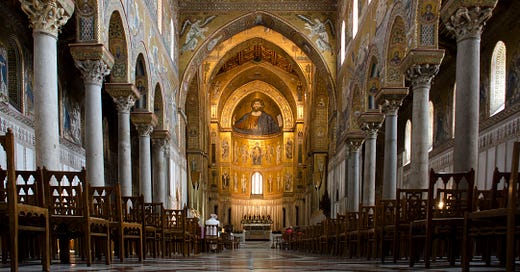



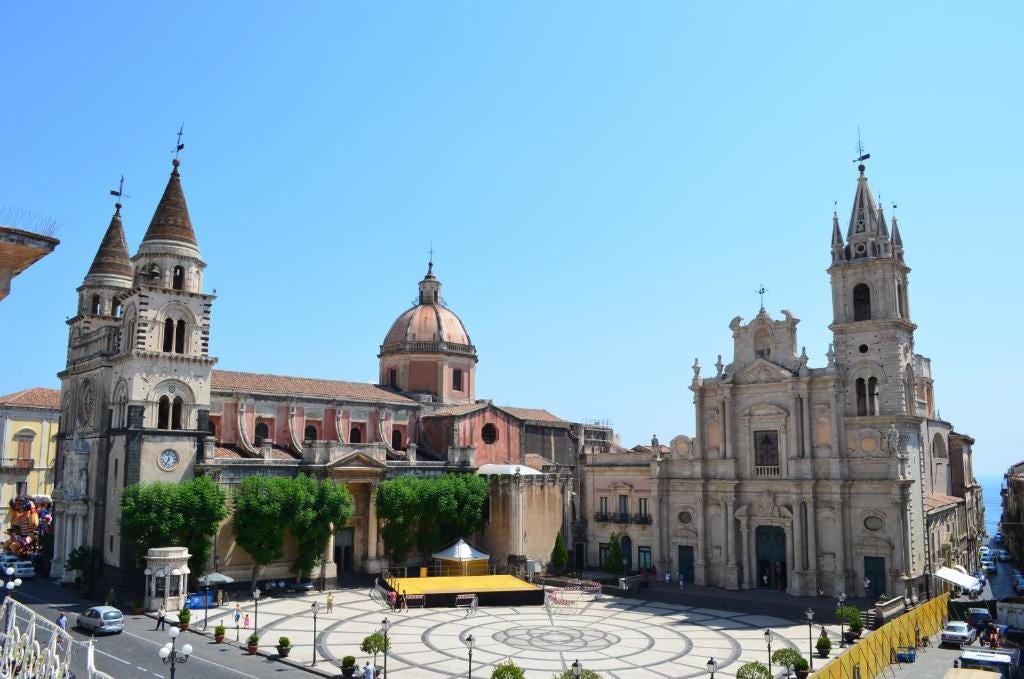
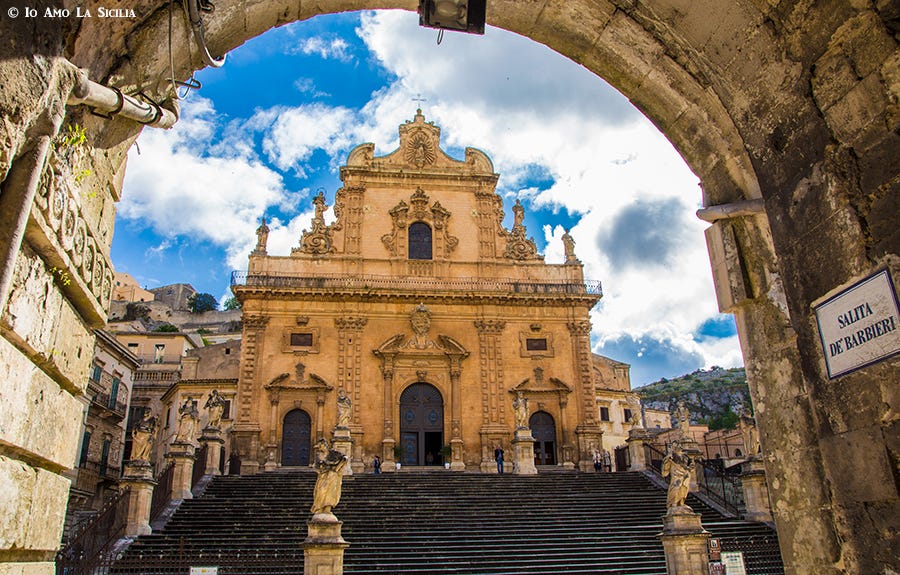
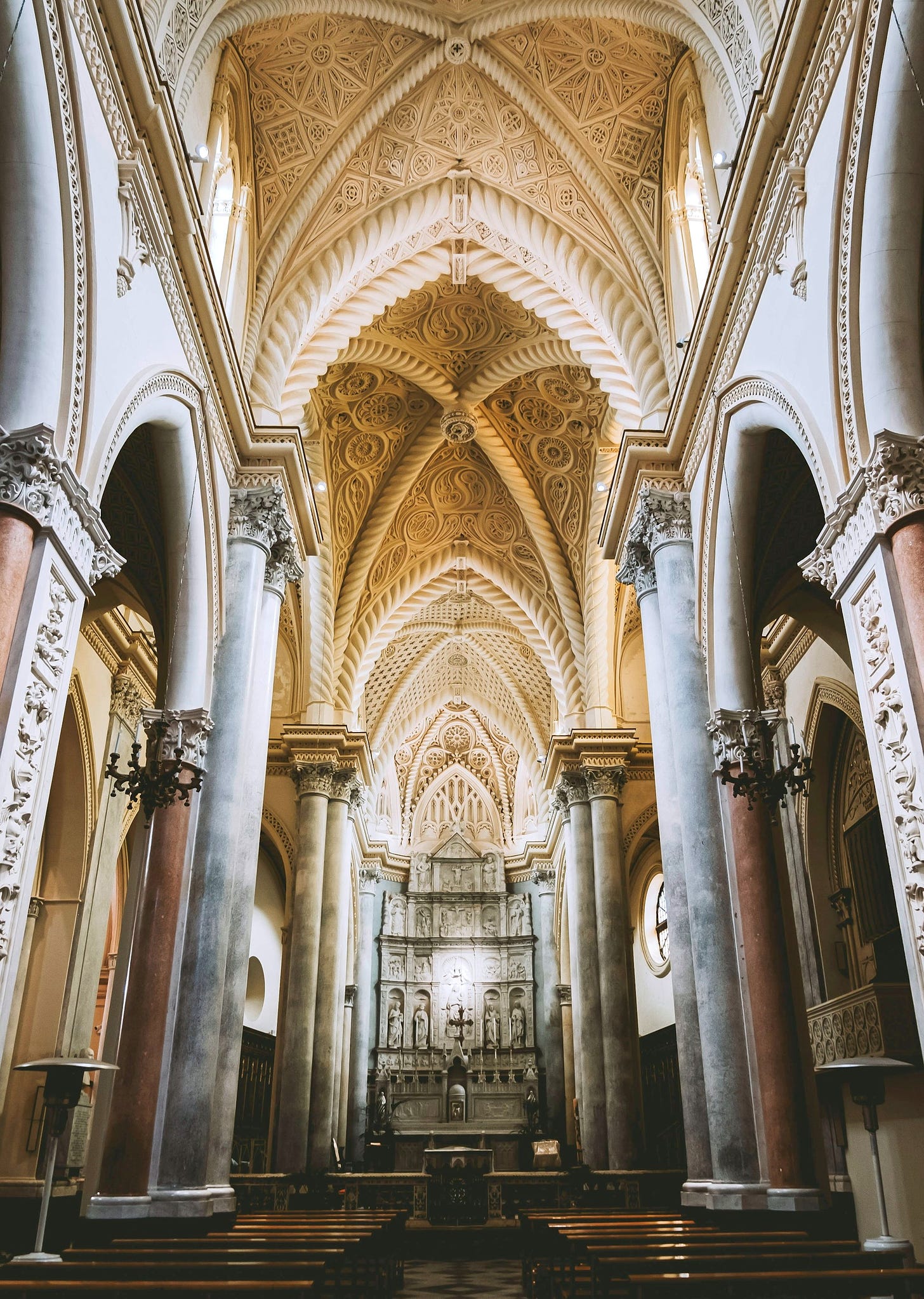
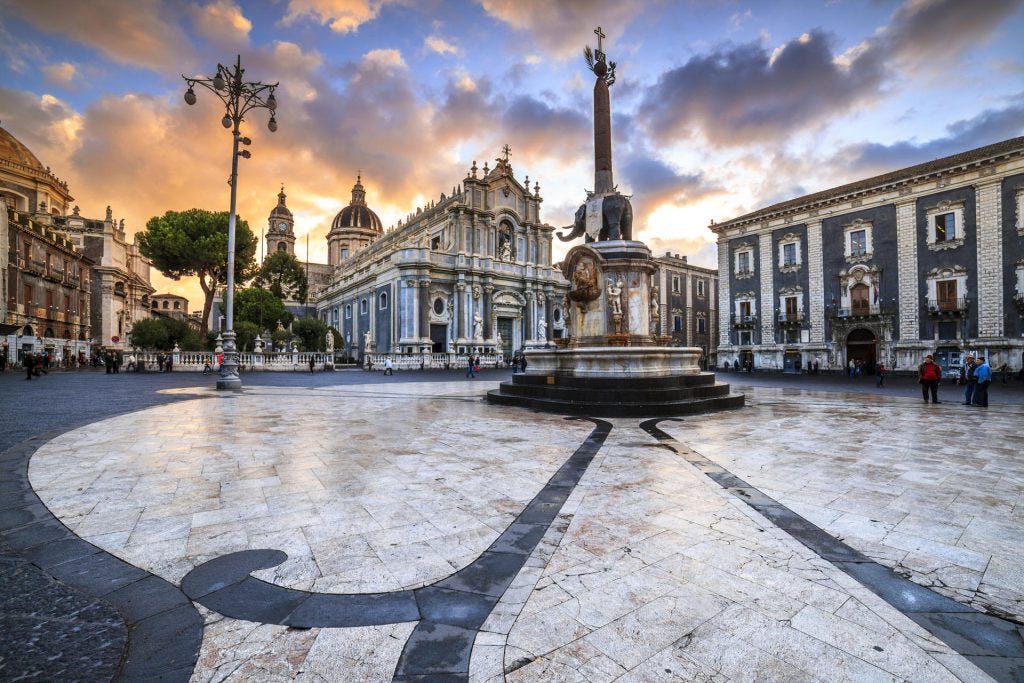
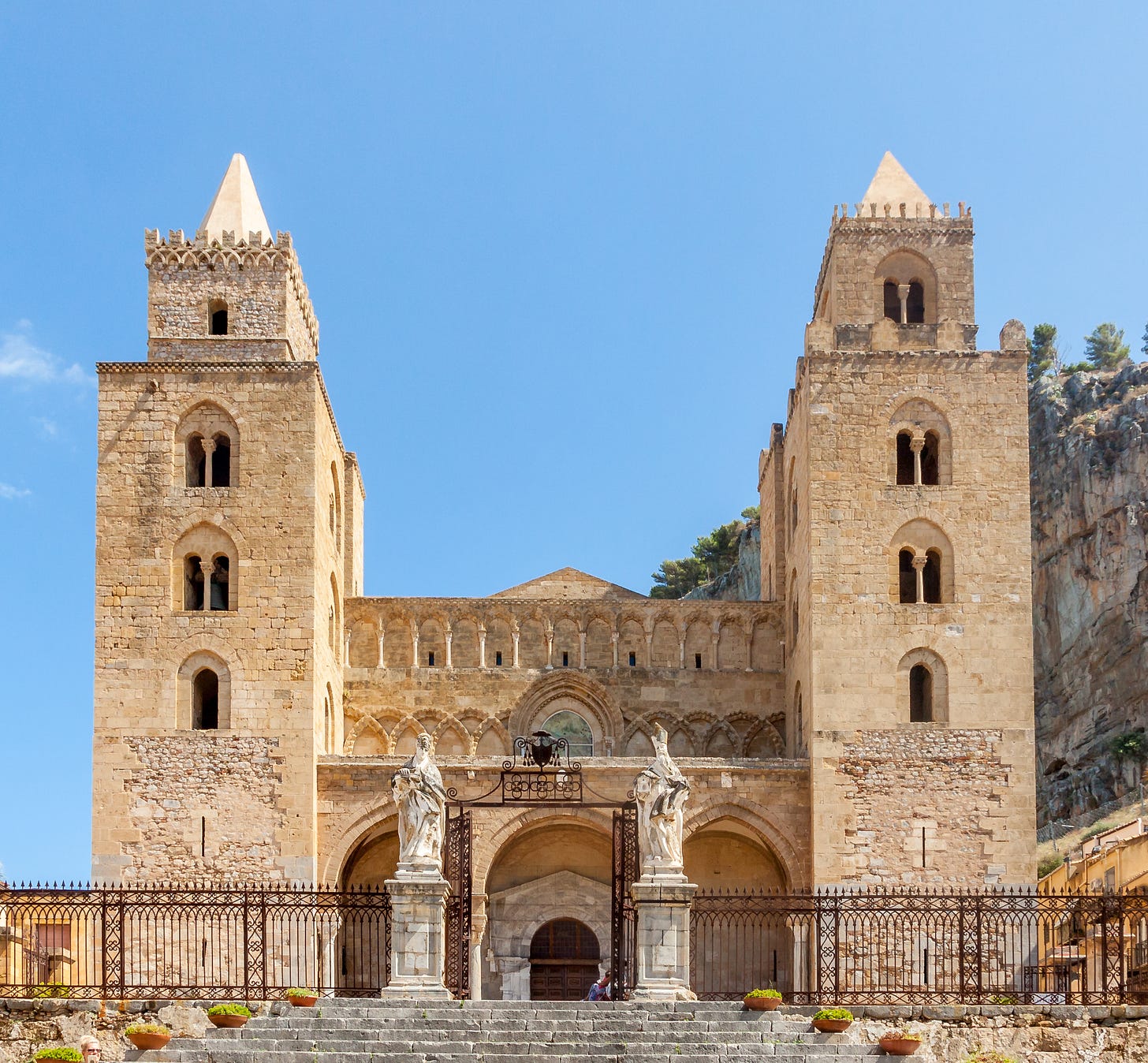
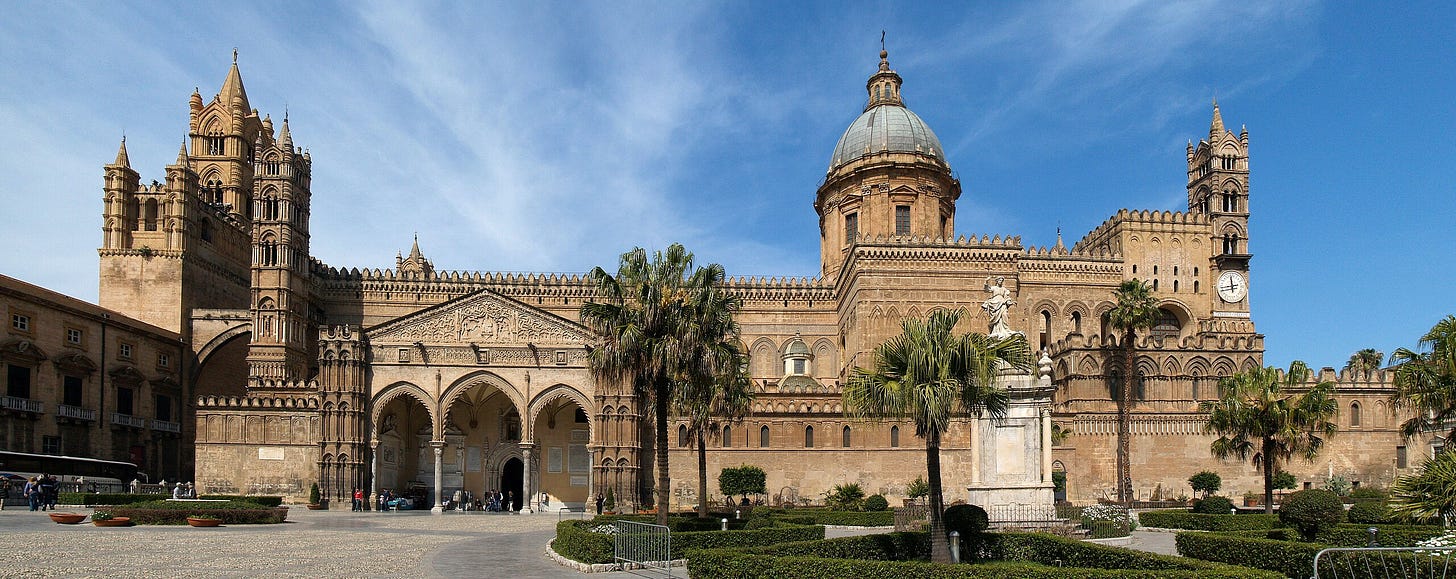
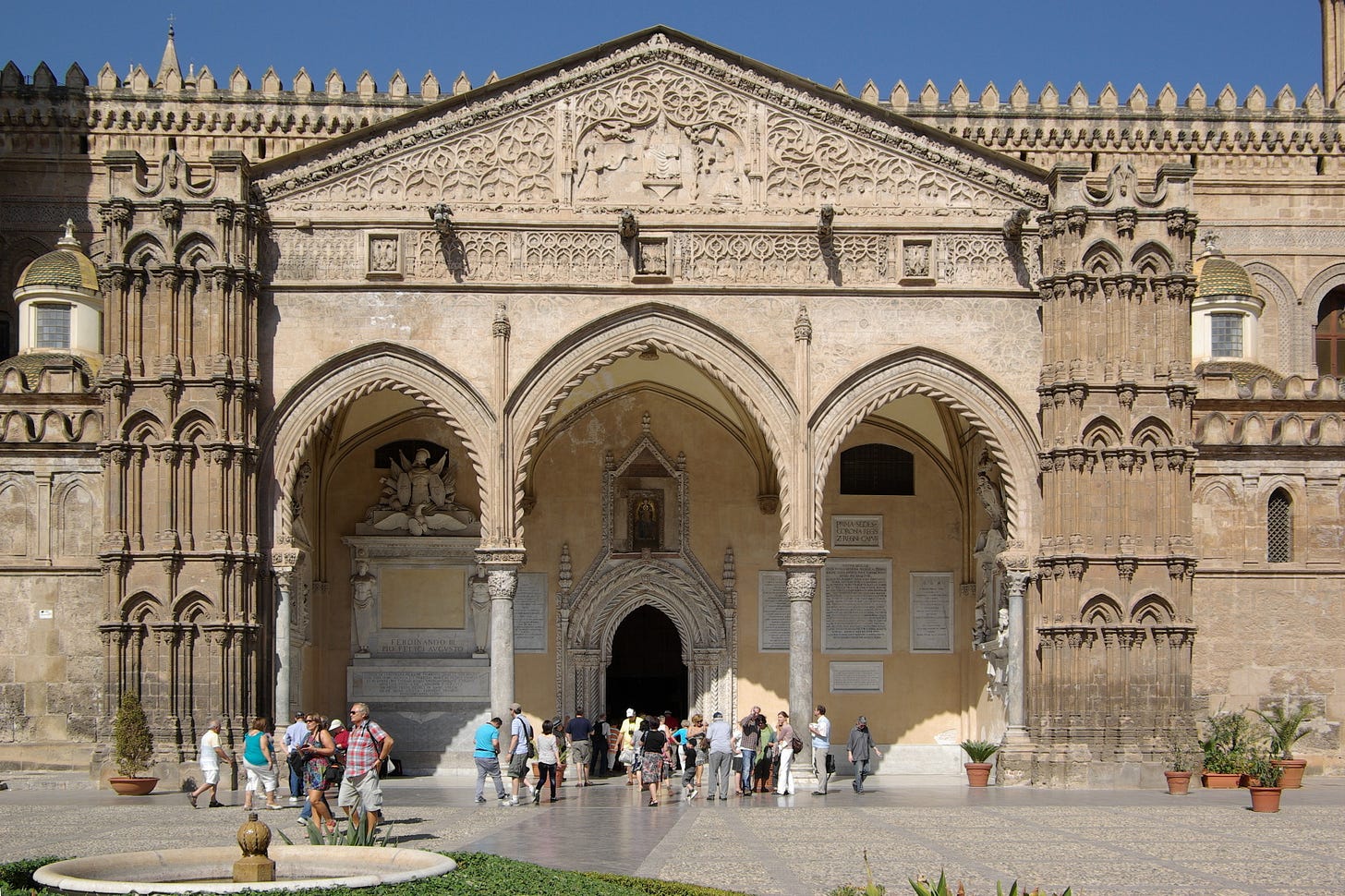
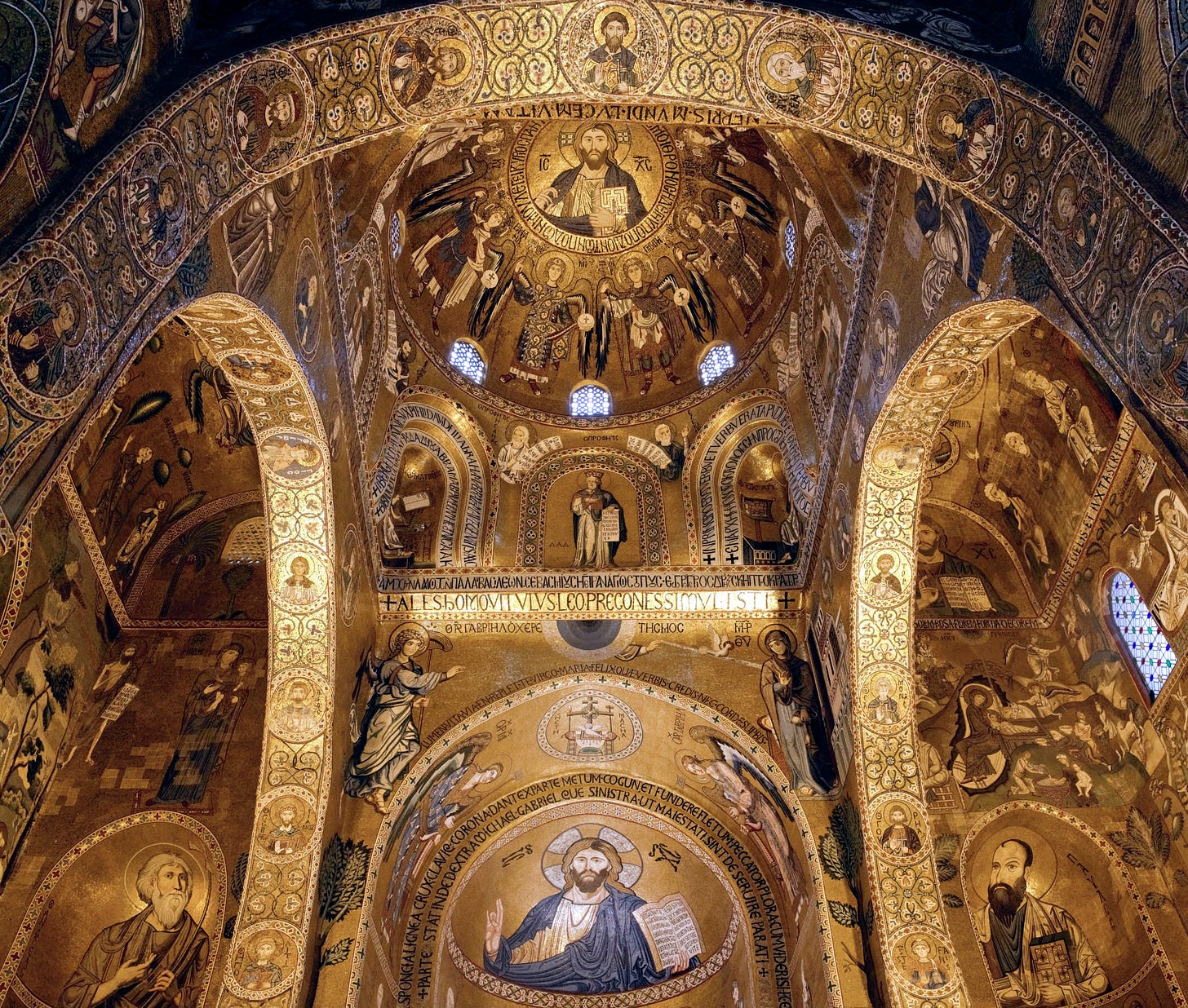
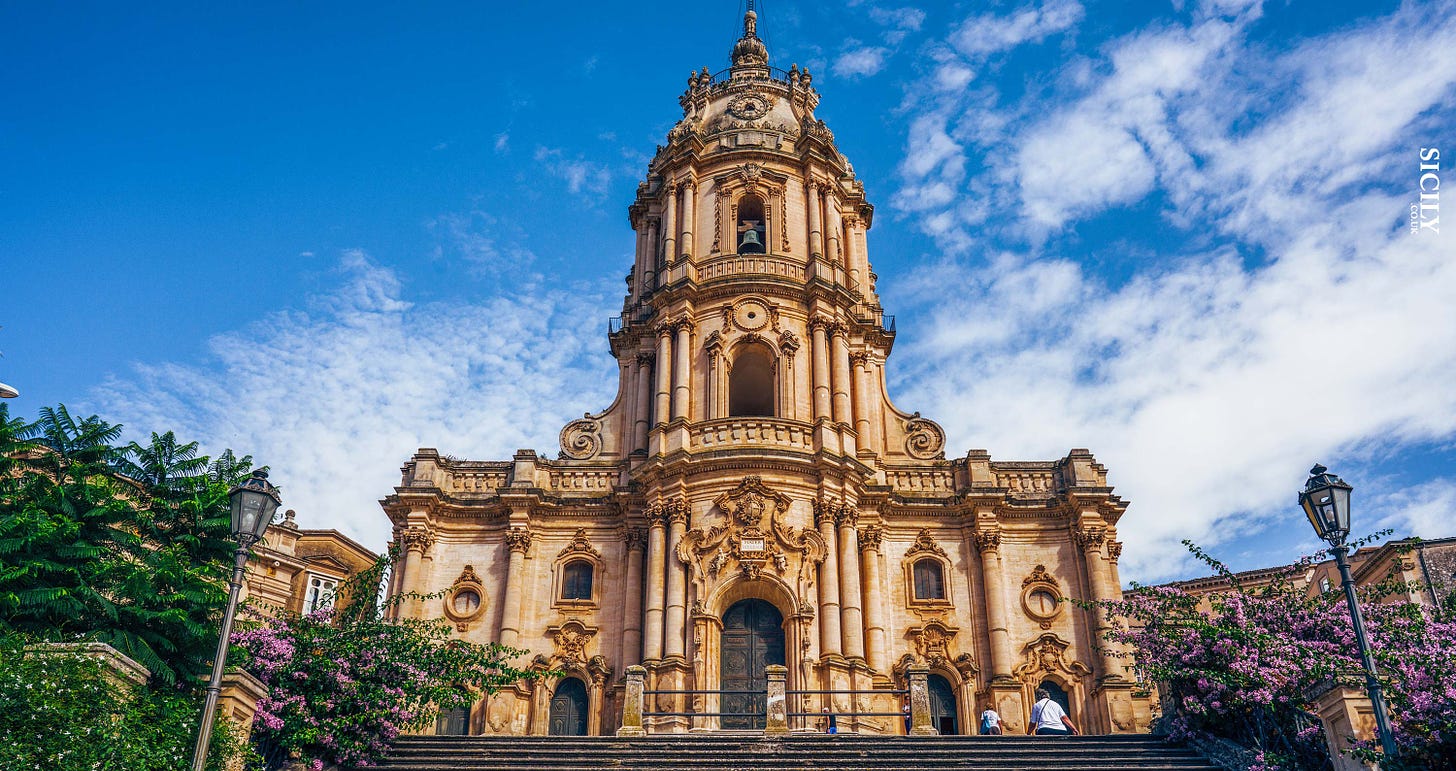
Peter, have you read any of Fr Alexander Lucie Smith's Sicilian novels?
This is really good. But Peter, I haven't been able to find Regina magazine for years. I clicked the link you provided and it was dead. Are they actually still publishing?